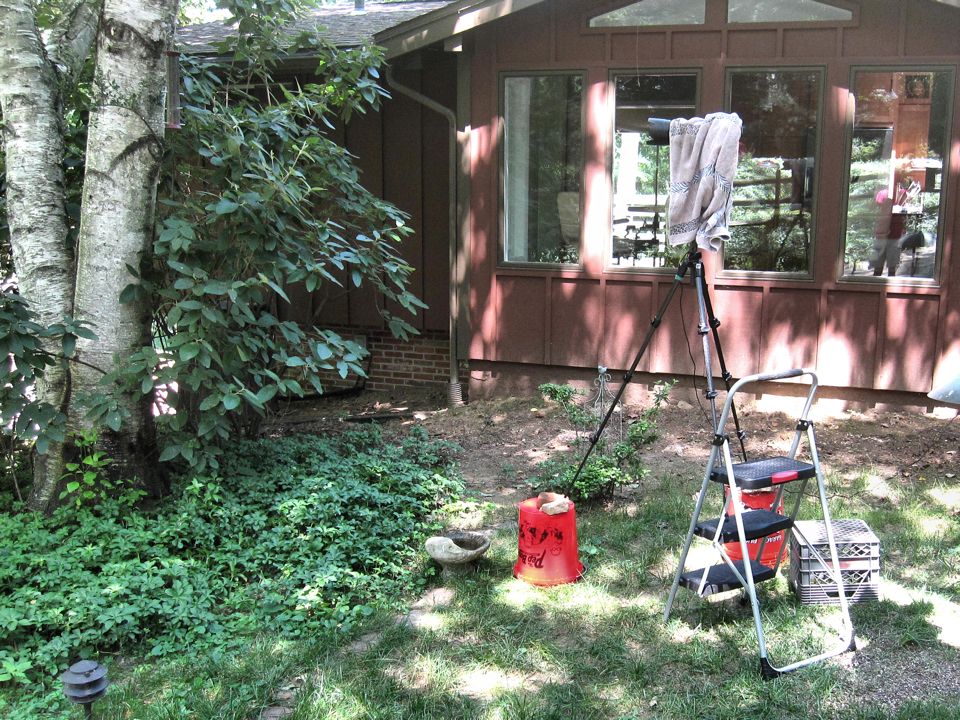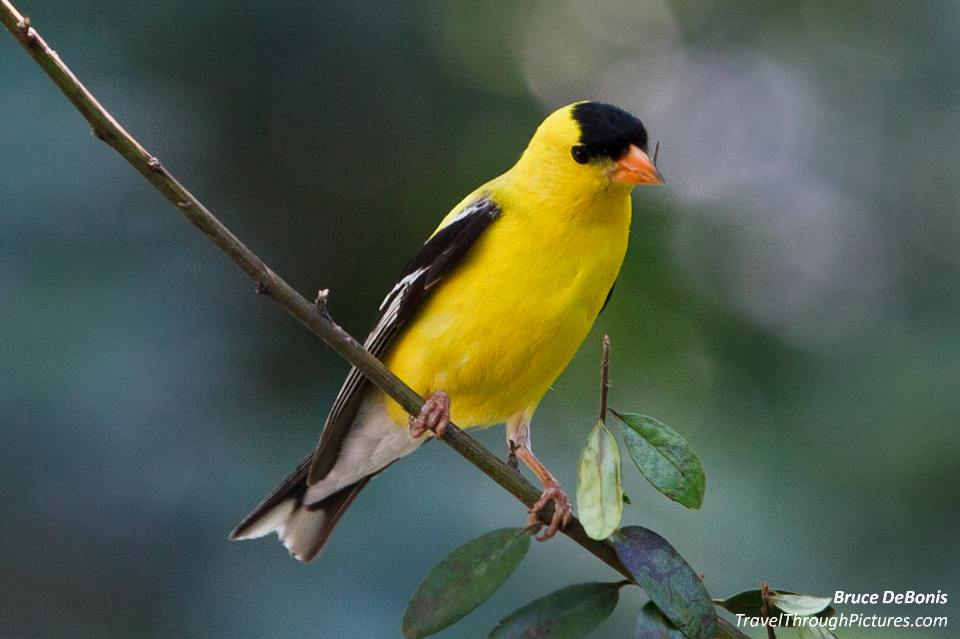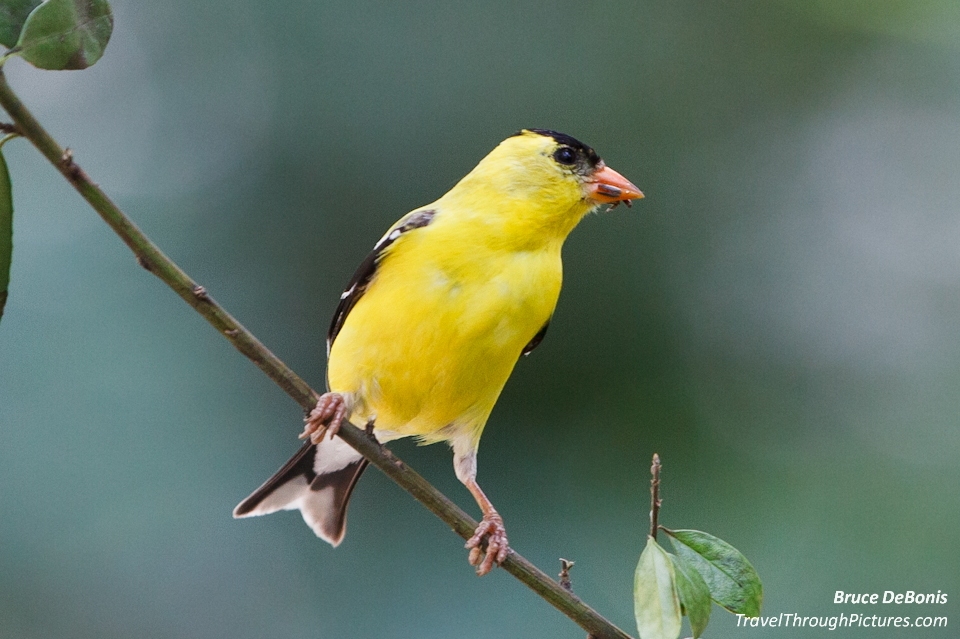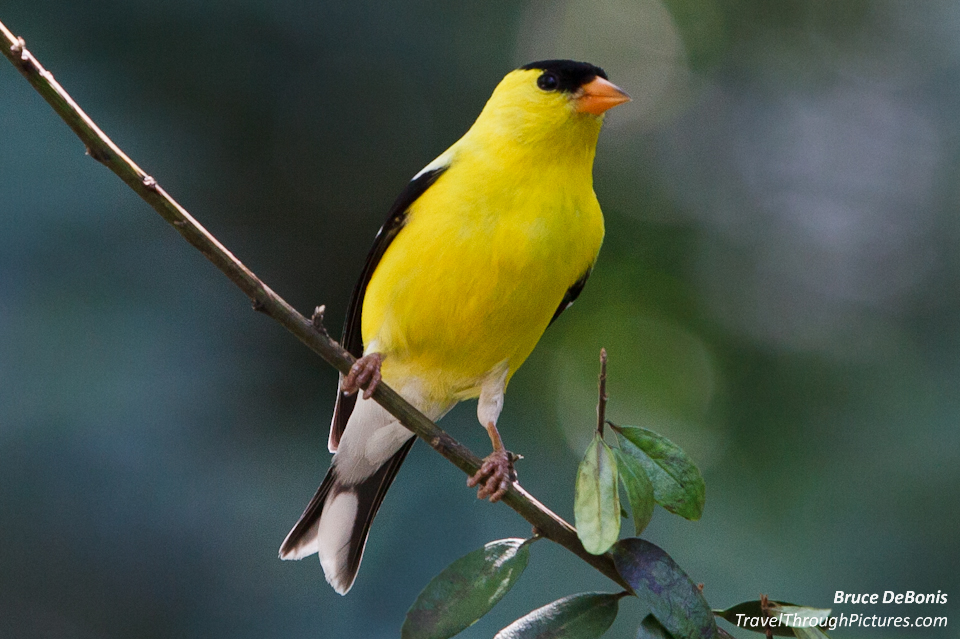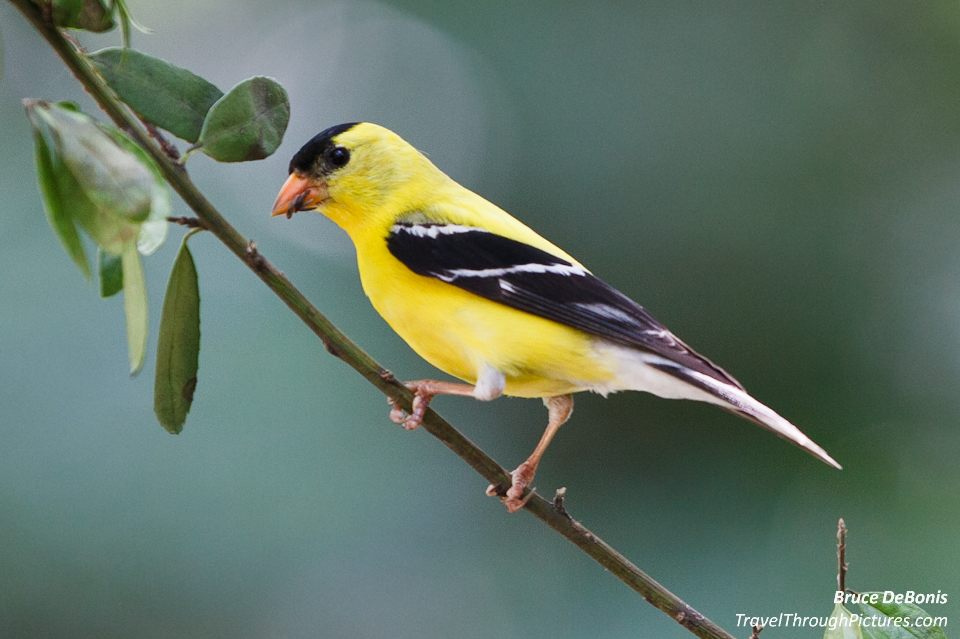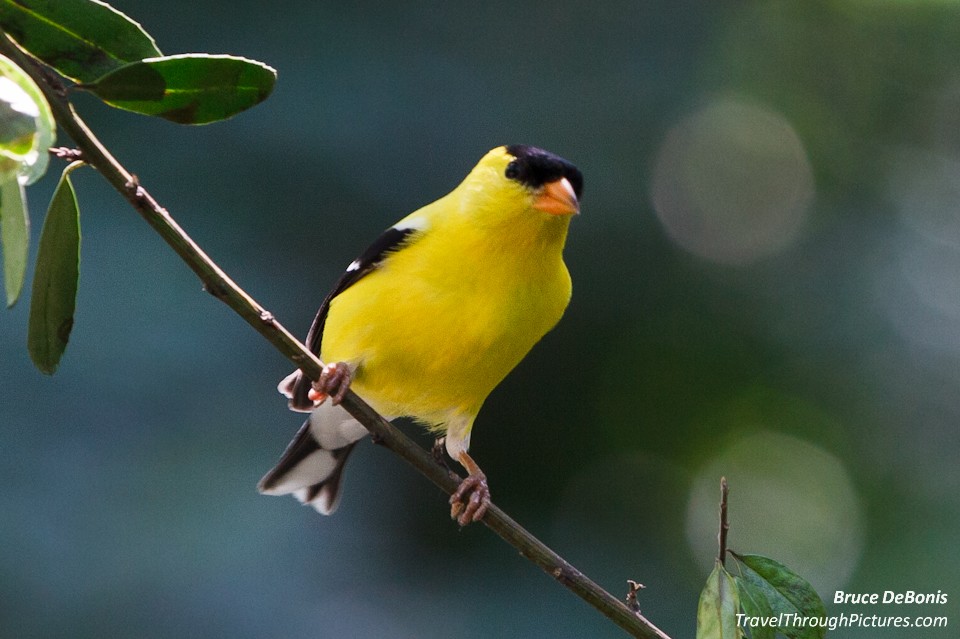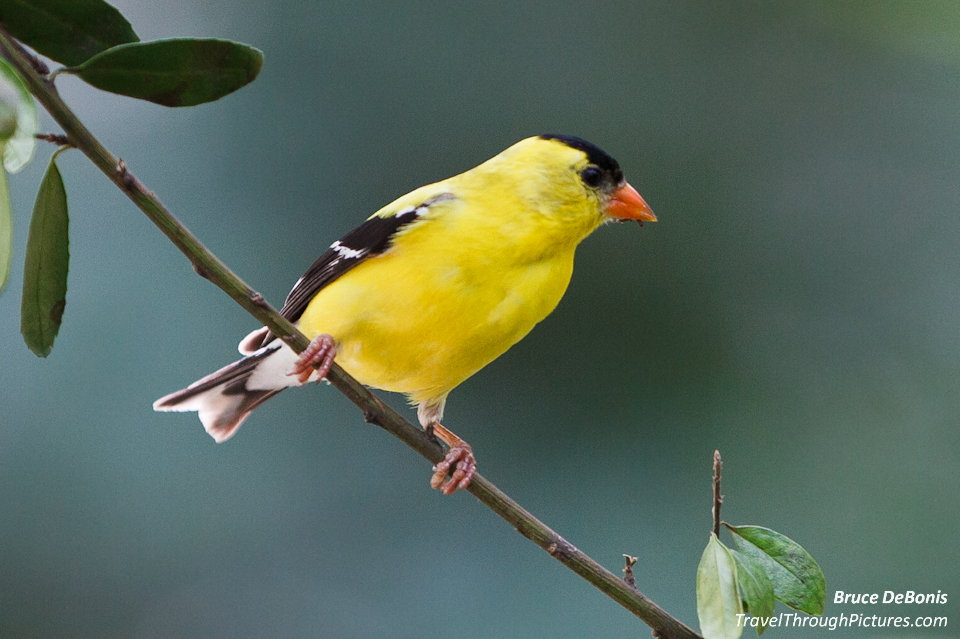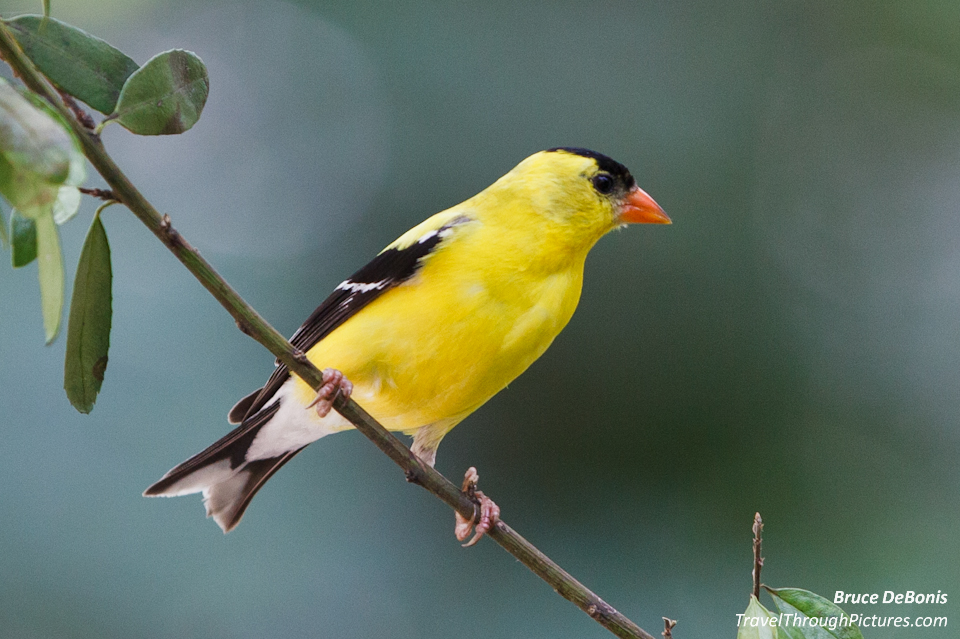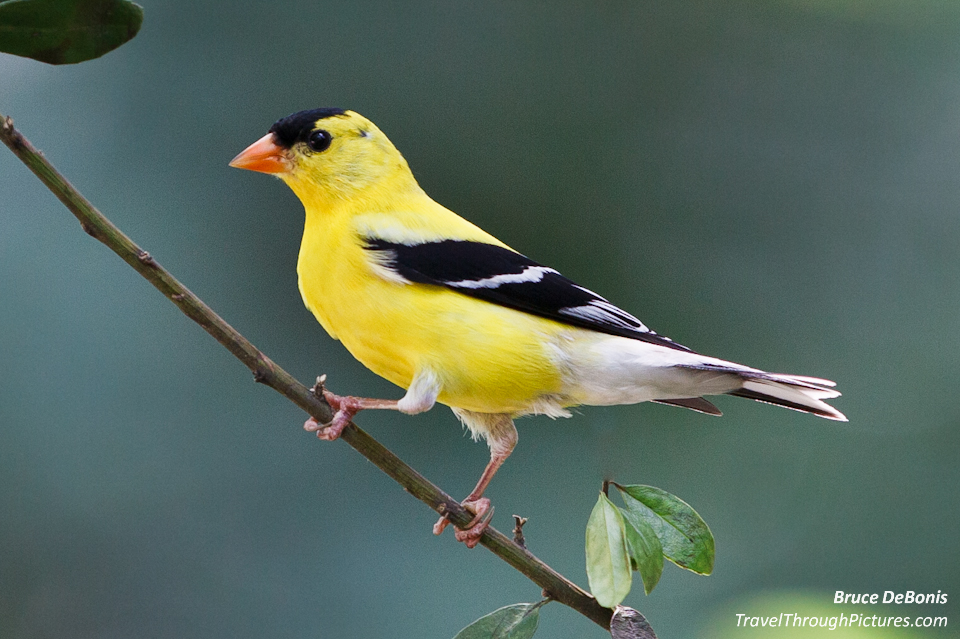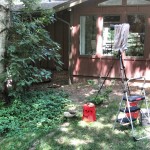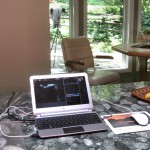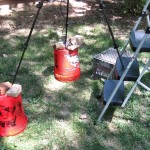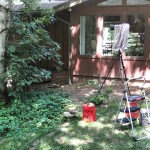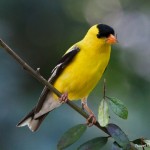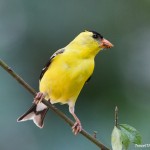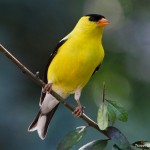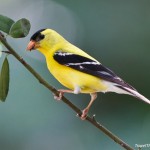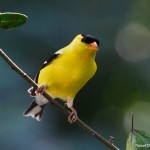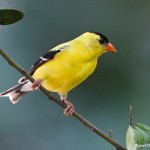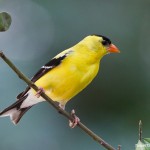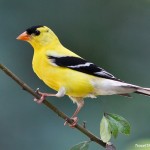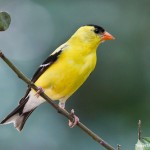Backyard Photography: American Goldfinches and Tethered Shooting
The Mission: Photograph American Goldfinches at your feeder
You’ve seen them. Gorgeous. Bright Yellow. Fast and hard to get near. They take flight when you try to get close. I wanted to photograph these buggers ever since I put up the finch feeder. Besides, I’ve dumped a ton of money into thistle seed and they owe me. Yes, they owe me big time.
The Solution: Tethered Shooting
There are only two ways I can think of to take these pictures: 1) purchase a stupidly expensive telephoto lens of at least 500mm (which I did the following year), 2) throw on a destructive teleconverter on whatever lens you have to get more reach, then hide in a bush, get bit by a tick, and get Lyme disease, or 3) take the pictures without being there with the equipment you have. Option 1 simply takes money I don’t have, I don’t really like teleconverters or the antibiotics required by option 2, so option 3 it is!
The great news is that I had the solution on my shelf ever since I purchased my first Canon digital SLR and it was free. Canon provides free software that will do what they call Remote Shooting otherwise known as Tethered Shooting. This allows you to hook up your camera to your computer via a long USB cable and then control the camera with simple mouse clicks. Cool. I can set up the camera outside and shoot from the comfort of my kitchen.
So the plan is simple, set up my camera on my Manfrotto tripod, aim the lens at the feeder, run the cable through an opened window, and click off a disk-drive’s worth of award winning photos. Well of course it was not that simple…. But not too difficult either.
The Equipment:
-
Canon 5D MkII
-
Canon 70-200 IS f/2.8 II lens set at full 200mm zoom
-
Four or five USB extension cords making about 30 feet of cable
-
A few Velcro straps, buckets, and a careless attitude towards knocking over your rig
-
My low-end but new laptop running the free, packaged Canon software
- Some cold Pilsner Urquells in the fridge next to your computer
The Set Up:
First, I didn’t want any lame, amateur photos of these birds hanging on my feeder. I wanted them to look as natural as possible as if I trekked far away to some secret birds-only-know part of the woods. So, I hammered a small tree branch snipped from a nearby bush onto the birch tree behind the feeder to make a natural looking perch. Then I snipped off a few of the leaves and mini-branches from a section making it a bare section for a bird to land. My clever plan was for the birds to land on the branch where I would have the camera pre-focused and no one would know the feeder was just inches out of frame.
Then, wouldn’t ya know it, no bird would use it. The damn little divas didn’t like it for some reason only known to these pea-brained er….. bird-brained buggers. I was so mad. After many hours of just sitting there waiting, I just gave up, packed it in, and had a beer. Then… about three days later, they started using the stick. Note that the leaves on the stick don’t look too healthy; they are dying and parched from being nailed to the tree for four days.
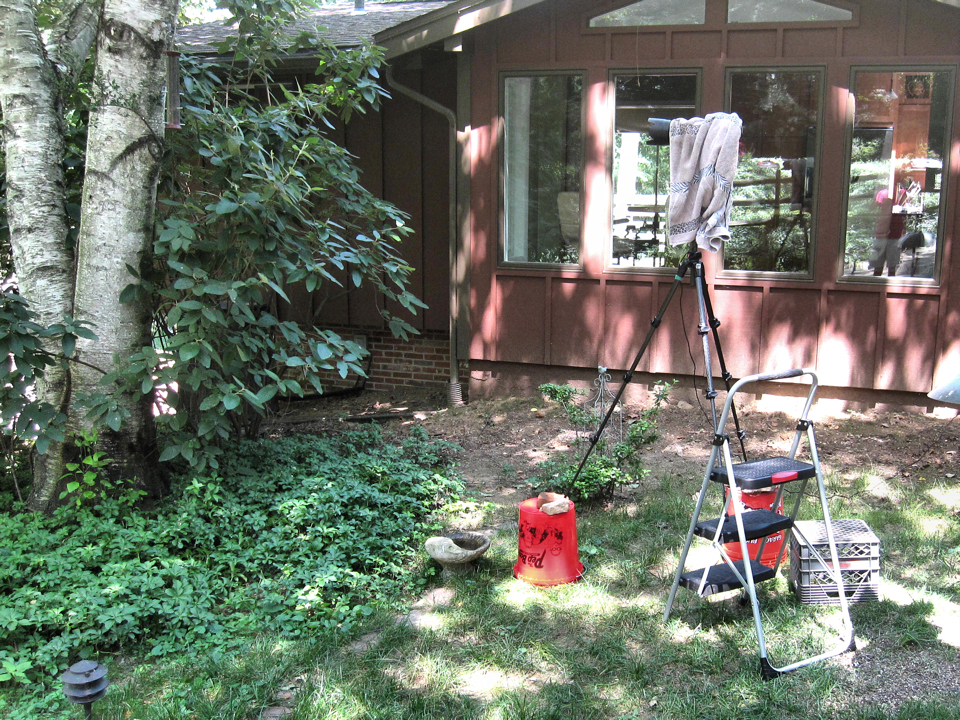 Now I have to get the camera and tripod up high enough to shoot the birds straight on. Hmmmm…… So a trip through the garage yielded the mess of a camera support system you see here. Don’t worry, I weighted everything down with some rocks. Ooooo, that’s thinkin’! So now I have about five grand worth of equipment teetering in the light breeze. I highly recommend Pep Boys car washing buckets; clearly their engineers secretly designed them for purposes like this. I’ll bet they are all bird photographers.
Now I have to get the camera and tripod up high enough to shoot the birds straight on. Hmmmm…… So a trip through the garage yielded the mess of a camera support system you see here. Don’t worry, I weighted everything down with some rocks. Ooooo, that’s thinkin’! So now I have about five grand worth of equipment teetering in the light breeze. I highly recommend Pep Boys car washing buckets; clearly their engineers secretly designed them for purposes like this. I’ll bet they are all bird photographers.
Why the towel over the camera? I don’t really know but it seemed to be a good idea at the time. I figured it would weigh the thing down for some sense of stability (you need some sense when your teetering on buckets), and keep the sun off of the camera. It also keeps light from entering through the back eyepiece.
To keep these fidgeting divas in focus, I made sure the stick was perpendicular to the camera to allow for differences in their positioning on the stick. Then I climbed up on the milk crate and focused the lens on the stick. The big mistake I made here is that I should have backed the focus off and set it about an inch in front of the stick thus ensuring the bird’s head was in better focus. I know the Peterson Field Guide shows bird drawings in just two dimensions, but let me assure you these guys have depth!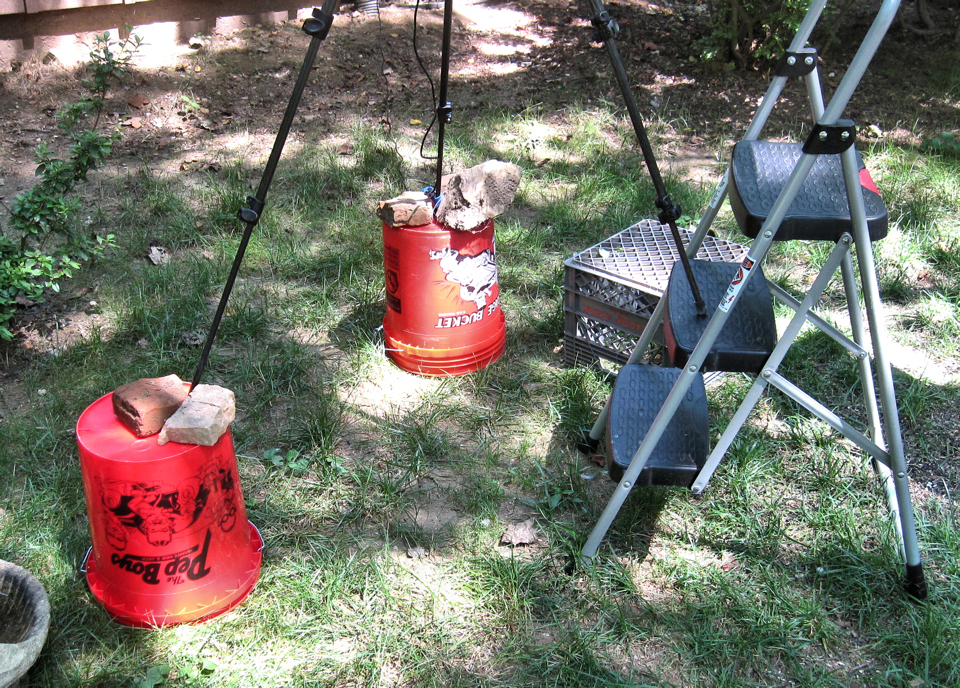
Now turn on the camera, set the mode to Manual, plug in the USB cord, fasten it to the tripod with Velcro cable straps, and run it over and through the window. Fire up the computer, start the Canon EOS Utility software and WOW! This crap really works!!!! You can control the camera with your mouse!
So what about the camera settings? The great news is that you can set almost everything from the control panel on the PC using your mouse. The only thing I have the camera set for is manual focus on the lens, and Manual mode on the body. All other wizardry is set back at the PC.
For the rest of the camera setup at the PC, my short advice is to experiment to get the correct exposure. There really is no formula but I will describe what I chose to do and you can work from here. From the control panel on the PC, I set partial metering because I thought that it would be the best coverage of the bird when the bird is in view. I only shoot RAW and you really don’t want +JPG as this additional file will unnecessarily slow file transfers between the camera and PC and hence slow shooting speed drastically. While you are in Manual mode, the software will behave like what you see in your viewfinder and will tell you if the camera thinks you are over or underexposed.
For ISO, shutter speed and aperture, I am in my constant wrestling match with light. The birds move and fidget so you want a fast shutter. I want the background blurred out so I want a max aperture of f/2.8. I don’t want grain and want the best quality so I want ISO 100. I also want to win the lottery and spend a decadent evening with the new Royal Kate but that ain’t gonna happen either. So I try and start with ISO 100 for best picture quality but given my shaded light, I can’t get any decent shutter speeds so quickly end up with an ISO setting of 400. This 5D MKII was touted as a great low-noise camera but I don’t find it so. ISO 400 is about as high as I like to go with it and given the lack of direct light, 400 it is. Next, I try f/2.8. Then I snap some pics and adjust the shutter to see where it lands what looks to be a properly exposed image. Then to get more speed, I underexpose a third or two of a stop with a plan to adjust it back up later in post processing.
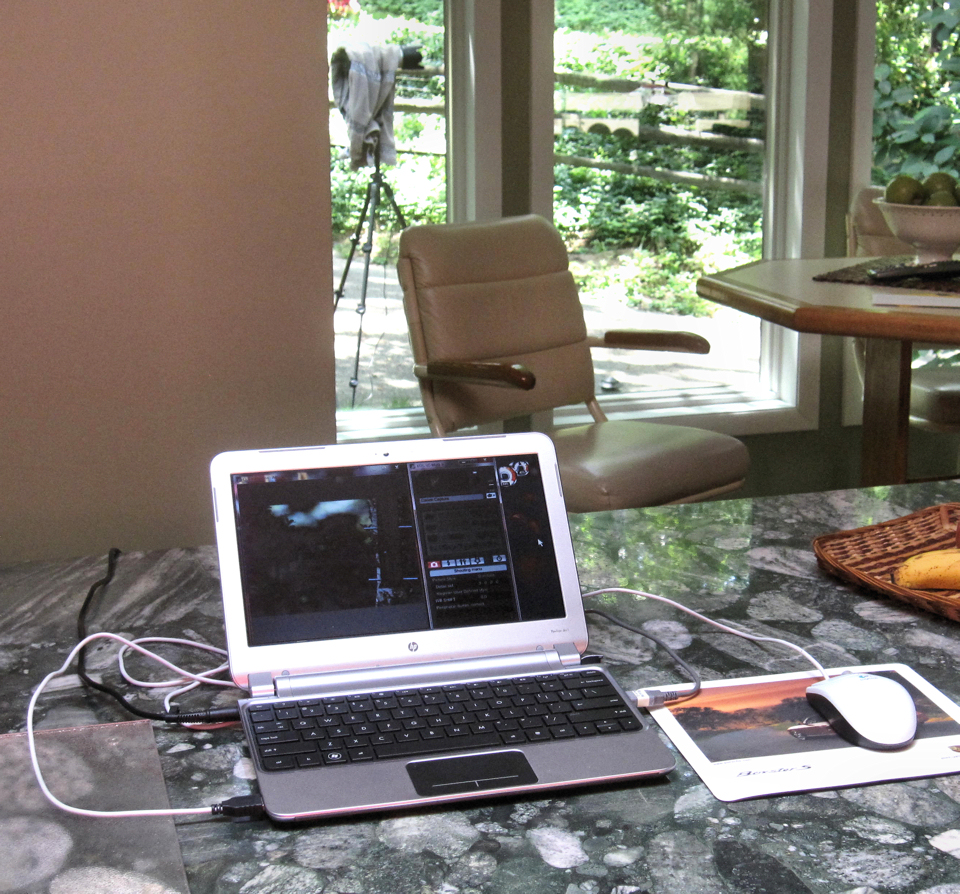 Now I crack a Pilsner Urquell, sit at my kitchen counter in front of my computer, and wait for the little turds to show up. Honestly, after all of this screwing around, it is hard to be positive. But just when I think I should be shooting buckshot instead of electrons, one of those little divas landed on the stick!!! Woooohoooo!!!! All is forgotten and I start to snap. Of course the exposure sucks. So you adjust. Try dropping shutter speed down first. You will notice that the birds move in a jerk-stop motion so I was surprised that I got away with a slower shutter speed than I assumed. Having a sturdy landing stick that won’t sway when they land helps big here too.
Now I crack a Pilsner Urquell, sit at my kitchen counter in front of my computer, and wait for the little turds to show up. Honestly, after all of this screwing around, it is hard to be positive. But just when I think I should be shooting buckshot instead of electrons, one of those little divas landed on the stick!!! Woooohoooo!!!! All is forgotten and I start to snap. Of course the exposure sucks. So you adjust. Try dropping shutter speed down first. You will notice that the birds move in a jerk-stop motion so I was surprised that I got away with a slower shutter speed than I assumed. Having a sturdy landing stick that won’t sway when they land helps big here too.
I found that I could just shoot away when they land. There is a time lag between clicking and seeing your pictures as the file transfer between camera and the PC is rather slow. So you kinda click on faith. I found that I could rapid fire until the camera buffer filled, then wait until the pictures came down before shooting more.
Now unfortunately, I am using a very small travel PC and the screen resolution is not great. If it was better, I would have discovered that my focus point could have been better. (By the way, you can change the focus from the PC by tapping a few arrows but to be honest, I never played with it.)
To sum up all of this, you must experiment to get the correct ISO/aperture/shutter/focus combination. There is no way around this and I found allowing the camera to set some of this using any of the auto-modes just doesn’t work well. But the Canon software is fantastic. It really is a marvel to use and best of all, it is free.
What will I do differently next time? First, my focus was off, I should have focused about an inch in front of the stick. Secondly, I need to shoot in earlier in the day when the light is better. But that is it!

